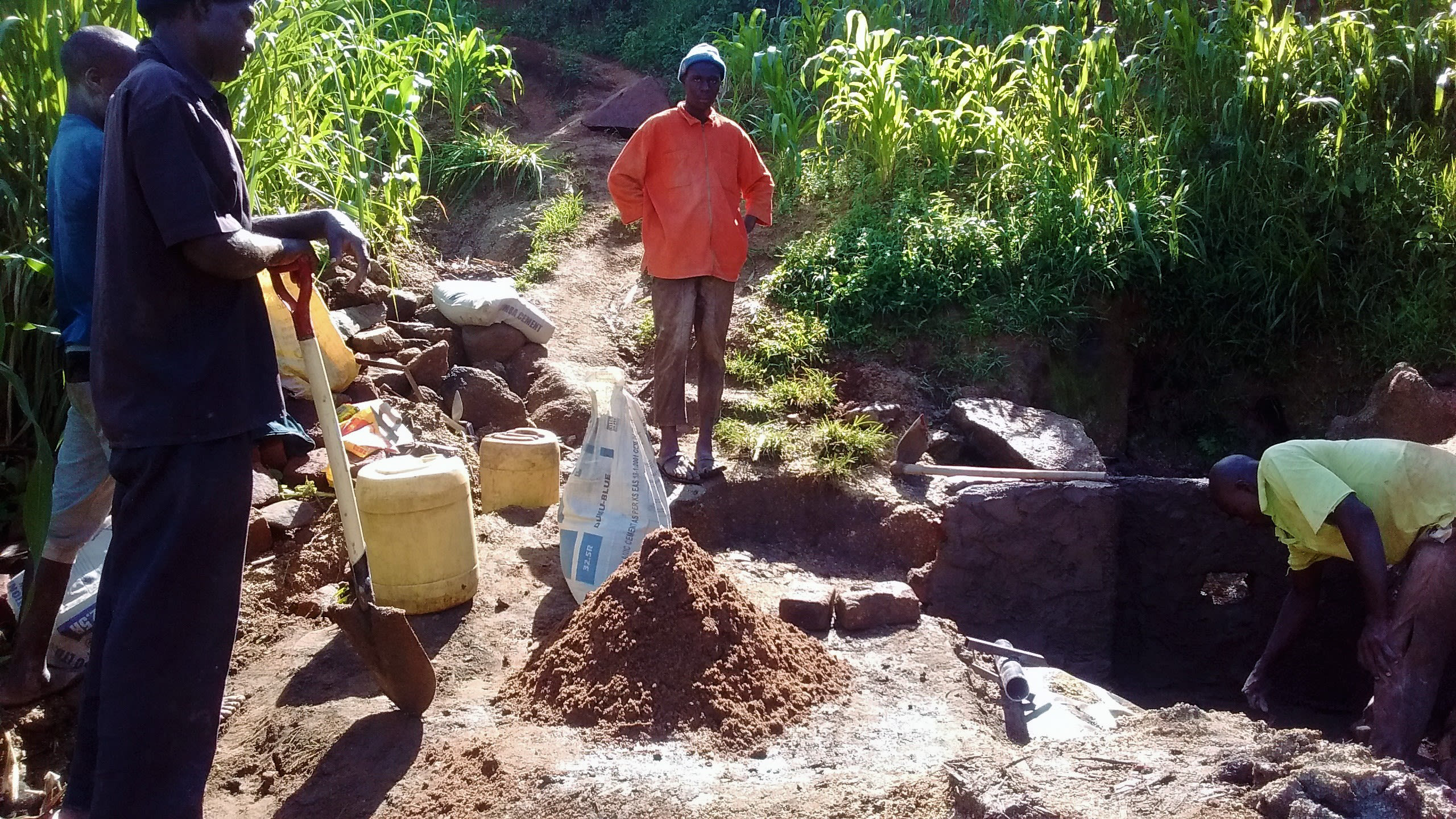This project is a part of our shared program with Western Water and Sanitation Forum (WEWASAFO). Our team is pleased to directly share the below report (edited for clarity, as needed).
Welcome to the Community
A typical day here consists of fetching water at 6 AM for cooking, drinking and cleaning, heading to the farm to work, coming home at midday to prepare lunch, returning to the farm to work, then going home in the evening to prepare supper, cleaning the house and then going to bed, exhausted.
Water Situation
Rosa Spring is unprotected and is thus open to contamination from many different sources. Animals are free to come and go when thirsty, and when it rains waste is washed into the spring.
Locals have fixed a banana stem at the eye of the spring, which functions as a makeshift discharge pipe. Containers from 10 to 20 liters in size are held underneath this pipe until full. When delivered back home, water is separated into containers by intended use; some at the latrine, kitchen, and family room.
Community members have spent a lot of money trying to see Rosa Spring protected, but this has never succeeded due to lack of technical and artisanal skills. This being an election year, some aspiring politicians even promised to get Elukho Community clean water to earn their votes. The elections are over, and they still haven't come through. Due to this, the community is very sensitive and does not want to risk being cheated again. When they first met us, they assumed that we were like those politicians who take advantage of others.
Thankfully, one of the community members pointed out our recent work at nearby Elukho Primary School. After a visit there, the villagers trust us to get the job done. "We are happy that our spring is going to be protected. This will help us not to walk long distances we have (been) walking looking for clean safe water for drinking," said Geoffrey. That’s one of our goals, Geoffrey!
Sanitation Situation
Less than half of households in Elukho Community have their own pit latrine. An average pit latrine is made of mud walls and grass-thatched roofs. The floor is a packed mixture of mud and cow dung.
There are only a couple of dish racks and clotheslines in the community, while nobody has a hand-washing station. However, everyone seems very excited about the opportunity to attend training sessions on good hygiene and sanitation practices.
Plans: Hygiene and Sanitation Training
Community members will attend hygiene and sanitation training for at least two days. This training will ensure participants are no longer ignorant about healthy practices and their importance. The facilitator plans to use PHAST (Participatory Hygiene and Sanitation Transformation), CLTS (Community-Led Total Sanitation), ABCD (Asset-Based Community Development), group discussions, handouts, and demonstrations at the spring.
Training will also result in the formation of a committee that will oversee operations and maintenance at the spring. They will enforce proper behavior around the spring and delegate tasks that will help preserve the site, such as building a fence and digging proper drainage.
Plans: Sanitation Platforms
On the final day of training, participants will select five families that should benefit from new latrines.
Training will also inform the community and selected families on what they need to contribute to make this project a success. They must mobilize locally available materials, such as bricks, clean sand, hardcore, and ballast. The five families must prepare by sinking a pit for the sanitation platforms to be placed over. All community members must work together to make sure that accommodations and food are always provided for the work teams.
Plans: Spring Protection
Fetching water is predominantly a female role, done by both women and young girls. Protecting the spring and offering training and support will therefore help empower the female members of the community by giving them more time and efforts to engage and invest in income-generating activities.
Protecting Rosa Spring will ensure that its water is safe, adequate and secure. Construction will keep surface runoff and other contaminants out of the water.

 Protected Spring
Protected Spring
 Rehabilitation Project
Rehabilitation Project






























